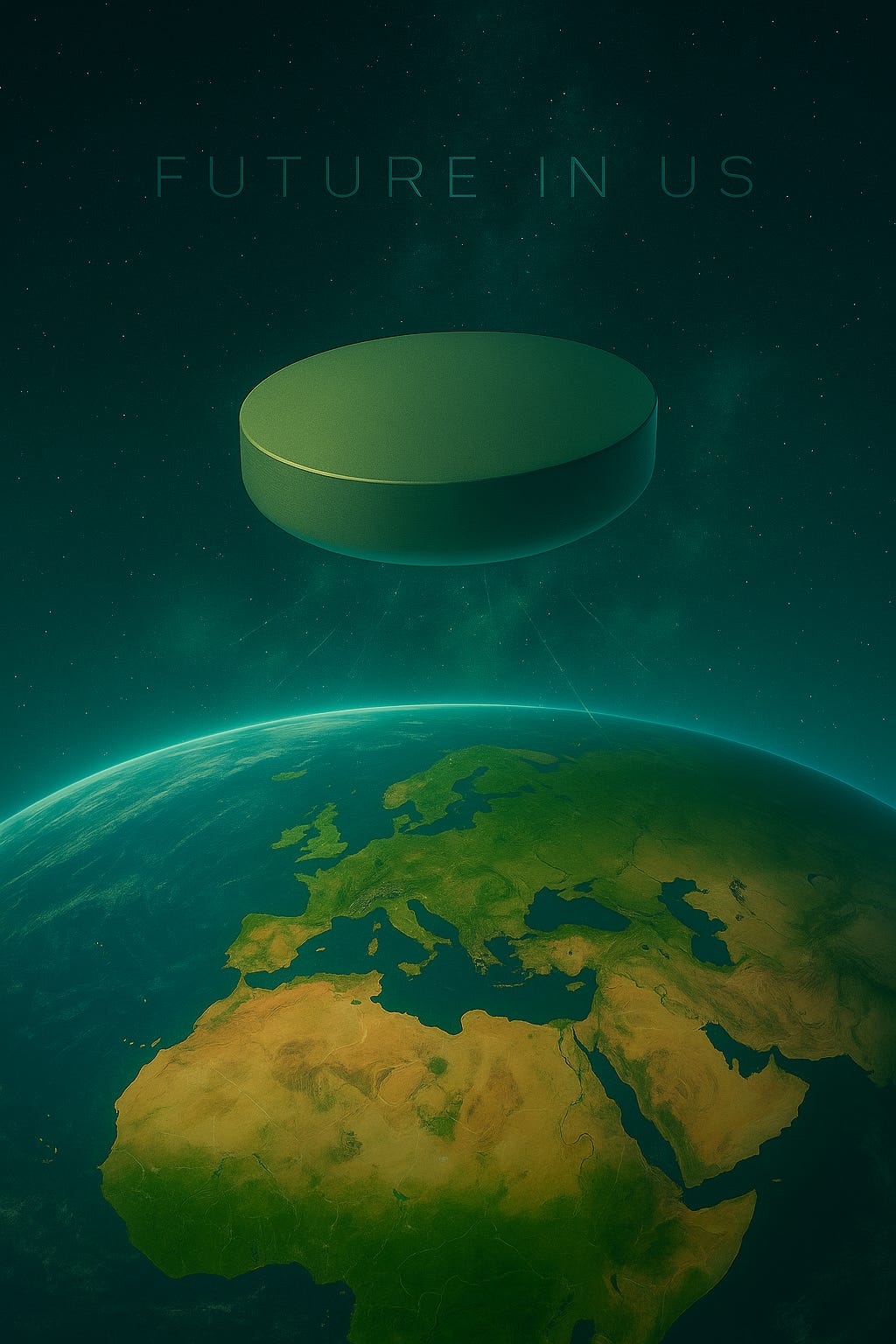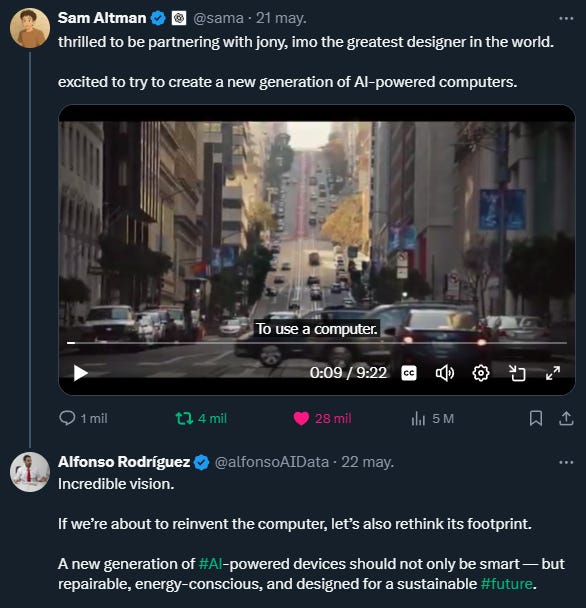The Invisible Future of OpenAI
A visible device, yet almost intangible — designed to understand you, not to distract you.
“In the future, devices won’t shine... they’ll whisper. And we’ll know we’ve arrived not when we can see them, but when we no longer need them.”
Last Wednesday, OpenAI and legendary designer Jony Ive announced a new initiative to build native artificial intelligence devices.
Sam Altman described this collaboration as one of the most exciting of his career. From FUTURE IN US, I applaud this vision of the future, but also felt the need to ask a fundamental question:
“If we’re about to reinvent the computer… shouldn’t we also rethink its impact?”
So I responded to Sam Altman’s post on X with this reflection:
Bursts of ideas, striking images, and a chain of reactions followed.
In the days since the announcement by Sam Altman and OpenAI on X, several conversations have caught my attention — such as the visualization shared by Ben Geskin, to which I replied with this reflection. Analyses, headlines, and responses from both specialized and general media have emerged, enriching the online debate.
I’ll be watching closely how sustainability, circular design, and ethical innovation are integrated into this proposal. I firmly believe that artificial intelligence has the power to amplify the best of humanity — but also to reflect our deepest contradictions. That’s why I hope this new wave of technology doesn’t forget the planet that makes it possible. Because there is no future… without a planet.

Designing a sustainable future is not only about building responsible and efficient devices, but also about ensuring that knowledge and collaboration are distributed fairly and accessibly. When technology enables idea-sharing, connecting minds, and continuous learning, we are also caring for the planet.
A truly sustainable approach is not only ecological — it is also fair, open, and shared. Because a better tomorrow is designed with intelligence... and with conscience.
What if the new device from OpenAI and Ive replaces everything we know?
A compact, screenless device, designed to naturally integrate into everyday life. No keyboard, no distraction — just AI always present.
Is it just aesthetic innovation… or a true response to the planet that sustains it?
See you in the next edition of FUTURE IN US.



